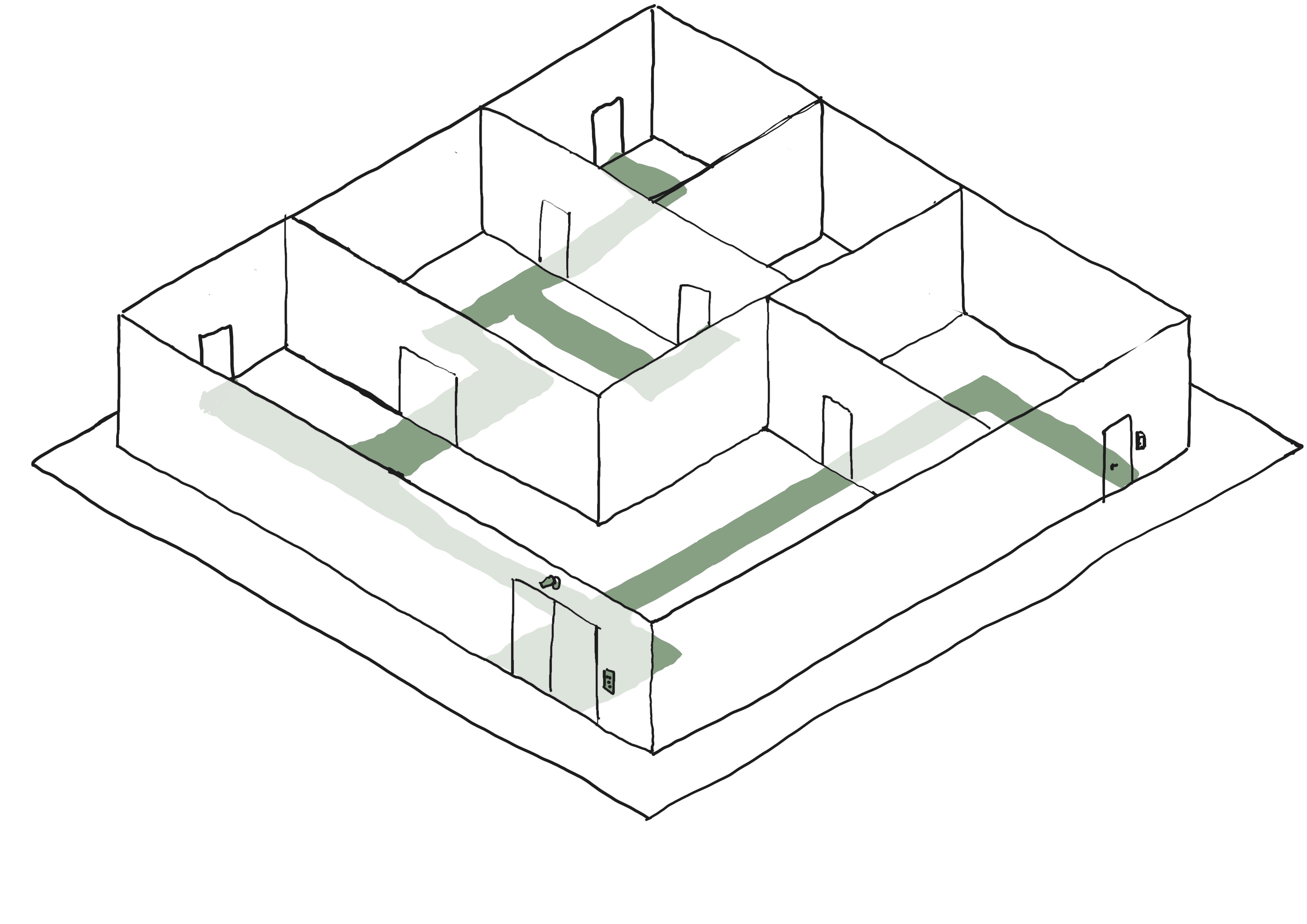Escape routes and evacuation conditions

There must be at least one exit to the outdoors, from any building. This is typically regulated by national or local laws such as building codes and fire safety regulations.
In Denmark, The Danish Building Regulations, is the applicable law when it comes to designing escape routes. In general, the number of escape routes should be proportional to the number of people in the area, they should all be easily recognisable, accessible and usable.
Clearly marked escape routes and a standard procedure for keeping them clear, are essential practices for an efficient and successful evacuation, in the event of an emergency.
Evacuations can occur as a defined or a dispersed movement of people from a physical area subject to potential danger.
A defined evacuation is a controlled movement to a predefined assembly point. E.g. by activating an automatic alert system that asks people to leave the building in orderly manner, to a predefined assembly point.
A dispersed evacuation is flight from an area to an undefined location. E.g. in the context of a sudden, life-threatening, violent incident, where people are instructed to flee or barricade themselves depending on the circumstances.
Incident-specific procedures and information should be developed to clarify what employees and guests should do during an evacuation.

